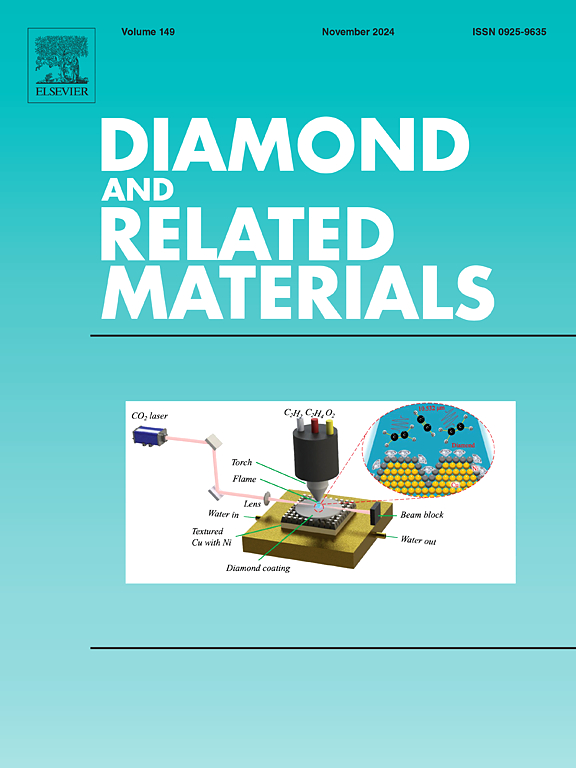Comparative study of deposition characteristics a-C:H films by plasma CVD using methane, acetylene, and cumene
IF 4.3
3区 材料科学
Q2 MATERIALS SCIENCE, COATINGS & FILMS
引用次数: 0
Abstract
High durability of hydrogenated amorphous carbon (a-C:H) films is one of the significant interests for improving their performance as hard masks in semiconductor processes. In this study, to achieve high-density, low-stress a-C:H films with high deposition rates, we used plasma chemical vapor deposition (CVD) to fabricate a-C:H films using uncommon hydrocarbons precursors like cumene (C9H12) and compared the film deposition characteristics with conventional hydrocarbons precursors like methane (CH4) and acetylene (C2H2). We evaluated the deposition characteristics of a-C:H films using all the precursors in terms of their concentration, reactor pressure, and self-bias voltage. Additionally, we analyzed the structure of the a-C:H films using Raman spectroscopy. Among all the films deposited, the deposition characteristics (mass density, deposition rate, and stress) of films deposited using cumene demonstrated superior characteristics compared to other molecules, suggesting its potential suitability for advanced applications. The films for cumene showed a wide variation of mass density from 1.0 g/cm3 to 2.0 g/cm3 with changing self-bias voltage. At low self-bias voltages (60 V–230 V), the films were polymer-like with a high hydrogen content, whereas, at high self-bias voltages (580 V–1100 V), the films were hard with a low hydrogen content. On the other hand, each film with methane and acetylene showed a narrower variation of mass density from 1.4 g/cm3 to 2.0 g/cm3 with changing self-bias voltage than that for cumene. These results suggest that the film structure can be diversely controlled through the self-bias voltage depending on the number of carbon atoms in one molecule rather than the type of molecular species.
甲烷、乙炔和异丙烯等离子体CVD沉积a-C:H薄膜特性的比较研究
氢化非晶碳(a-C:H)薄膜的高耐久性是提高其在半导体工艺中作为硬掩膜性能的重要兴趣之一。在本研究中,为了获得高密度、低应力、高沉积率的a-C:H薄膜,我们采用等离子体化学气相沉积(CVD)技术制备了a-C:H薄膜,并将其与常规碳氢化合物前驱体如甲烷(CH4)和乙炔(C2H2)进行了比较。我们从浓度、反应器压力和自偏置电压等方面评估了使用所有前驱体的a-C:H薄膜的沉积特性。此外,我们还利用拉曼光谱分析了a-C:H薄膜的结构。在所有沉积的薄膜中,使用异丙烯沉积的薄膜的沉积特性(质量密度、沉积速率和应力)优于其他分子,表明其具有潜在的应用前景。随着自偏置电压的变化,异丙烯薄膜的质量密度在1.0 g/cm3到2.0 g/cm3之间变化较大。在低自偏置电压(60 V - 230 V)下,膜呈聚合物状,含氢量高,而在高自偏置电压(580 V - 1100 V)下,膜呈硬质,含氢量低。另一方面,随着自偏置电压的变化,甲烷和乙炔膜的质量密度在1.4 g/cm3到2.0 g/cm3之间的变化幅度小于异丙烯膜。这些结果表明,薄膜结构可以通过自偏置电压进行不同的控制,这取决于一个分子中碳原子的数量,而不是分子种类的类型。
本文章由计算机程序翻译,如有差异,请以英文原文为准。
求助全文
约1分钟内获得全文
求助全文
来源期刊

Diamond and Related Materials
工程技术-材料科学:综合
CiteScore
6.00
自引率
14.60%
发文量
702
审稿时长
2.1 months
期刊介绍:
DRM is a leading international journal that publishes new fundamental and applied research on all forms of diamond, the integration of diamond with other advanced materials and development of technologies exploiting diamond. The synthesis, characterization and processing of single crystal diamond, polycrystalline films, nanodiamond powders and heterostructures with other advanced materials are encouraged topics for technical and review articles. In addition to diamond, the journal publishes manuscripts on the synthesis, characterization and application of other related materials including diamond-like carbons, carbon nanotubes, graphene, and boron and carbon nitrides. Articles are sought on the chemical functionalization of diamond and related materials as well as their use in electrochemistry, energy storage and conversion, chemical and biological sensing, imaging, thermal management, photonic and quantum applications, electron emission and electronic devices.
The International Conference on Diamond and Carbon Materials has evolved into the largest and most well attended forum in the field of diamond, providing a forum to showcase the latest results in the science and technology of diamond and other carbon materials such as carbon nanotubes, graphene, and diamond-like carbon. Run annually in association with Diamond and Related Materials the conference provides junior and established researchers the opportunity to exchange the latest results ranging from fundamental physical and chemical concepts to applied research focusing on the next generation carbon-based devices.
 求助内容:
求助内容: 应助结果提醒方式:
应助结果提醒方式:


